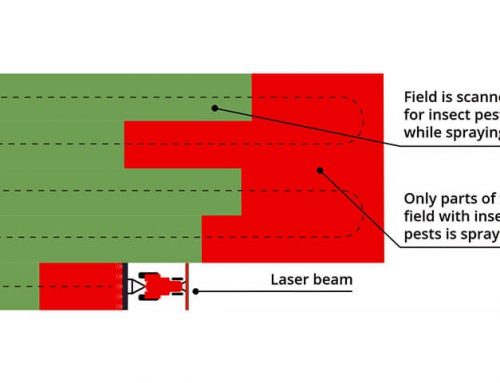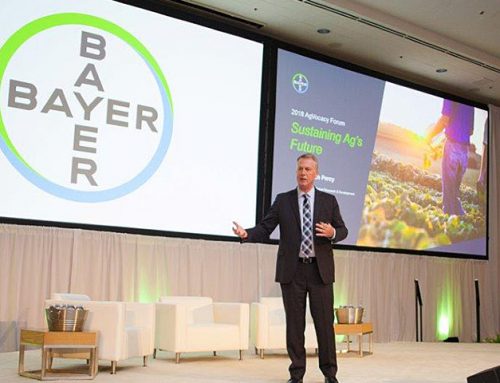There’s no shortage of television shows or movies that promote the allure of outer space and captivate us with thoughts of extraterrestrial worlds and bizarre forms of life. But for those who raise their eyes to the heavens to contemplate these imaginations, perhaps they should look down instead. Because just below our feet is an exciting world that we are now beginning to better understand and appreciate. And what we learn could profoundly affect our quality of life and those of future generations.
In case you haven’t guessed, we’re talking about soil.
Let’s begin with a basic fact: soil is complex. In it, you’ll find air, water, decaying organic matter, and a composite of minerals, such as sand, silt and clay. Within this porous matrix, a moving mixture of air and water supports an ecosystem that is teeming with life. One gram of soil can contain up to a billion microorganisms – and most of them remain undescribed. Scientists don’t yet fully understand the function of these organisms, but we know many of them play a critical role in the food we eat.
That’s because soil is not simply a lifeless medium for growing things. Within it, a dynamic community of microorganisms – the soil microbiome – is constantly interacting with its environment, including the crops we plant and harvest for food. Over the past decade, scientists have learned a tremendous amount about the influence of beneficial microbes on human health, which aid in everything from our immune responses to nutrition. But we are only beginning to scratch the surface (pardon the pun) when it comes to our understanding of the way the soil microbiome affects the food we grow.
Beneficial microorganisms can protect and improve the health of crops – just as they do in humans – but we need to know more about the complex interactions between microbes and plants. That is what prompted Bayer to create a new company with Ginkgo Bioworks that is focused exclusively on the soil microbiome, with a special emphasis on how microbes can aid in nitrogen fixation. While some crops such as soybeans and legumes host specific microbes that meet their nitrogen needs, most other crops depend on nitrogen-containing fertilizers to obtain this essential nutrient. Nitrogen fertilizers can add unnecessary costs to farmers and represent an environmental concern, if used improperly. Developing a new microbial nutrient-delivery system would have profound benefits for agriculture and society alike.
Unlocking the potential of the soil microbiome is arguably the next frontier in sustainable agriculture. Improving a crop’s ability to optimize its essential nutrient requirements using soil microbes is just one exciting area of research, but it’s not the only one. Beneficial soil organisms can help protect plants by selectively eliminating harmful microbes directly, by operating as antagonists to inhibit or interfere with the pathogen, or by stimulating the plant’s own defense mechanisms. Just as some species of ants are known to fiercely protect the trees that provide them with food and shelter from other animals, some soil microbes have a symbiotic relationship with a host plant to help ward off other soil-borne threats. What if this defense mechanism can be enhanced?
The potential applications of soil microbes go well beyond crop protection measures. Studies show the structure and diversity of the bacterial community in desert plants is very different than that of other areas, suggesting it may be possible to transfer microbial benefits to other drought-sensitive crops. And if drought tolerance can be achieved, why can’t we overcome other stressful environments? Perhaps one day, the use of “donor” microbes may be a key step in the restoration of an entire ecosystem. Faced with a limited amount farmland and a rapidly rising population, we could certainly use the boost in productivity that a healthy soil microbiome may one day provide.
Microbes are not the only inhabitants of the soil. Communities of larger organisms, including many invertebrate species, are part of the macrobiome, and these also contribute to a diverse and healthier soil environment. The soil macrobiome plays a critical role in the primary decomposition of dead plant material and in soil aeration, especially in forest ecosystems. Protecting the macrobiome is a primary consideration during the registration of plant protection products, to help maintain soil fertility or provide an intact buffer to separate an agricultural field from an environmentally sensitive area.
Modern agricultural practices reflect the importance of healthy soils. Reduced tillage in suitable agricultural soil types has helped preserve topsoil from erosion and reduced fuel and water consumption on many farms. Healthier soils act as “carbon sinks” to capture greenhouse gases and provide higher-yielding crops. And yet, despite the incredible gains in productivity seen over the past 50 years, all will be for naught if we can’t reverse the loss in farmland and the degradation of fertile soils seen throughout much of the world. The Food and Agriculture Organization of the United Nations estimates that 10 million hectares of cropland are lost each year due to soil erosion alone.
It’s clear that the surface on which we stand is more than dirt. If properly managed, the soil micro- and macrobiome holds the key to increased soil fertility, improved crop production and agricultural sustainability. As we continue to practice responsible stewardship of our farmland to preserve what we have, we must also continue to study the secrets that lie beneath us so that we can grow and thrive.
Maybe it’s time we took our heads out of the clouds and set our sights a little lower.











